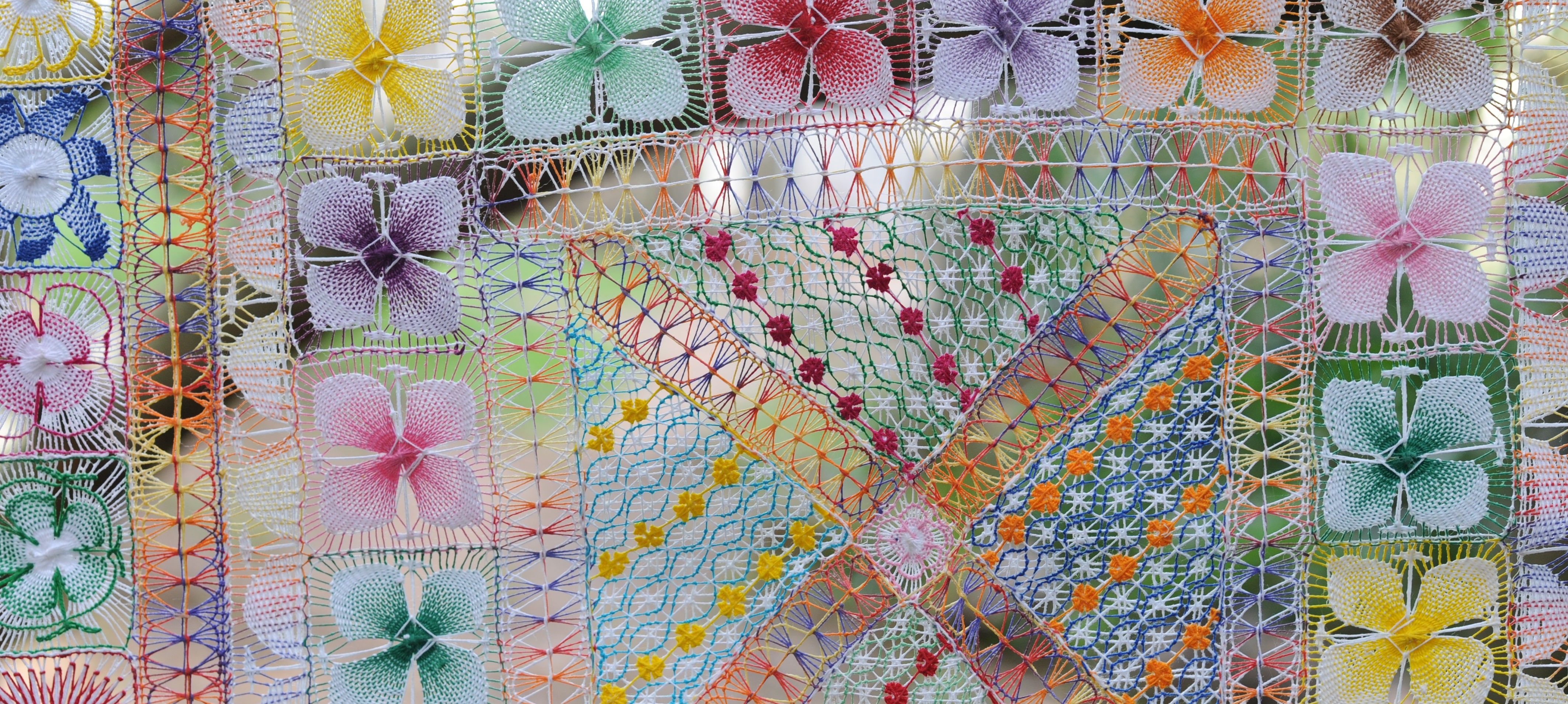
Art in Embassies commissioned Donna Rhae Marder to create a monumental wall hanging for the U.S. Embassy in Asunción. In May of 2019, Marder traveled to Asunción to conduct a week long artist exchange. Her program of events included meetings with established Paraguayan weavers, workshops with local artisans, as well as visits to museums and cultural centers. The trip also provided an opportunity to further research textile traditions unique to Paraguay.
For the last twenty years, Donna Rhae Marder has been using domestic materials and methods to create artwork, using a sewing machine as a sculptural tool and weaving and assembling diverse materials such as paper and photographs into more permanent forms. Her more recent work incorporates existing and new textile materials. Upon arrival from the U.S., Marder conducted student workshops at Fundación Tobatí, a community foundation of local artisans. Aided by video demonstrations, she explained her approach to textile production through non-standard sewing techniques. Marder encouraged participants to experiment by discussing the role of discarded and scrap materials in her artistic practice.
The ensuing dialogue explored a diversity of weaving techniques in Paraguay, in particular the established ñanduti lace tradition. Characterized by a web of threads resembling a wheel spoke, ñanduti embroidery represents an important aspect of Paraguayan cultural production. Marder was also able to view and connect several historic and contemporary examples of ñanduti to her own artistic practice.
Following a tour of the U.S. Embassy in Asunción, she discussed her exchange with Ambassador Lee McClenny. Embassy Asunción had also organized several meetings with professional artists and curators, organized by the Public Affairs staff at the embassy and led by Adrianna Ortiz, President of Instituto Paraguayo de Artesania (IPA). The meetings included visits to the Casa de la Independencia Museum, El Cabildo Cultural Center, and the Museo del Barro. In appreciation of the artisans and institutions with which she engaged, such as her studio visit with ceramicist Julia Sanchez, Marder gave out “envelopes that included a small example of what [she would] be creating for the embassy. Exchanging this small item felt personal and frequently emotional.”
Now back in the United States and in her studio, Marder is eager to maintain the conversations and relationships she initiated in Asunción. The cultural background gained from “diverse visual experiences” during the exchange is informing the creative process for her commissioned work for the new U.S. Embassy.